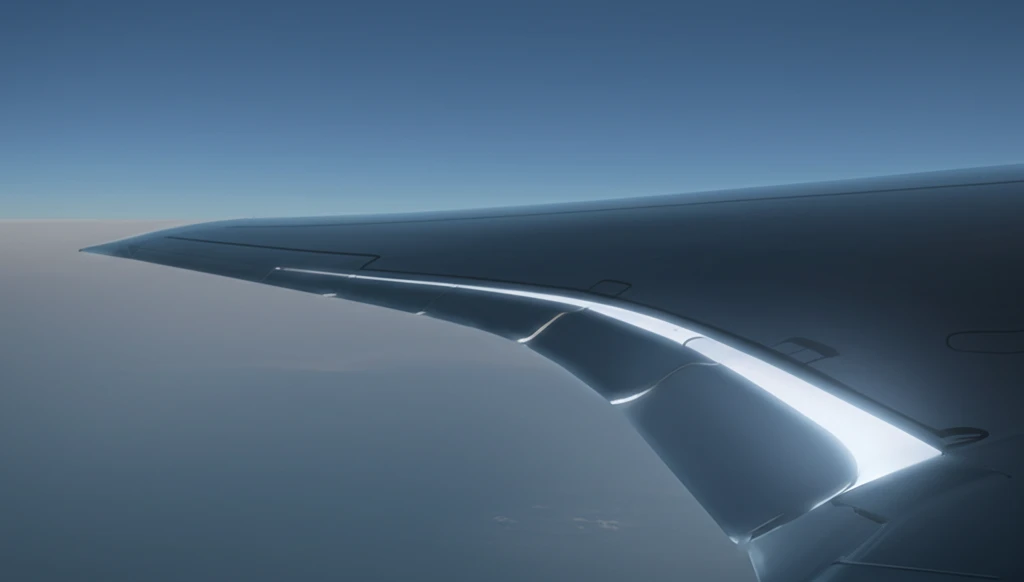
Smart Wings: How Shape Memory Alloys are Revolutionizing Air Travel
"Explore the innovative use of shape memory alloys in slat-cove fillers to reduce airframe noise and improve aerodynamic performance, paving the way for quieter, more efficient flights."
For decades, air travel has been a marvel of engineering, connecting people and cultures across vast distances. However, the environmental impact of aviation, particularly noise pollution, has become a growing concern for communities near airports. Aircraft produce significant airframe noise during approach and landing due to geometric discontinuities. One major contributor to this noise is the leading-edge slat, a high-lift device deployed to improve aircraft performance at lower speeds.
The noise generated by these slats is the disruption of airflow, especially in the cove area just behind the slat. Shape Memory Alloys (SMAs) present a fascinating solution. SMAs are special materials that can remember a shape. Engineers are experimenting with something called a slat-cove filler (SCF) made from SMA. Imagine a material that can fill in that noisy gap when the slat is extended, making the airflow smoother and the flight quieter. In prior studies, it was shown to reduce the airframe noise by filling in the area aft of the slat and stopping air circulation.
Now, scientists are building on this idea. Using both computer models and real-world experiments, they're exploring how an SMA-based SCF can adapt to different flight conditions, all while reducing noise. This research is about finding ways to make air travel quieter, more efficient, and more environmentally friendly. As concerns grow about noise pollution near airports, it's more important than ever to minimize noise during landing. This is the future of flight.
The SMA Slat-Cove Filler: A Deep Dive

The core of this revolution is the SMA slat-cove filler, a device designed to smooth airflow over the wing by filling the cove aft of the leading-edge slat. This eliminates the circulation region within the cove, which is a primary source of airframe noise. As the slat moves, the SCF will need to handle a great deal of air pressure and still be able to keep its shape. The design must reduce noise and keep airflow smooth for the wing to function properly. A team of researchers are pushing the boundaries of aviation technology. They aim to refine and improve existing designs, focusing on the adaptability and efficiency of a scaled high-lift wing incorporating a superelastic SMA SCF.
- Noise Reduction: Fills slat cove to eliminate air circulation and reduce noise.
- Aerodynamic Efficiency: Smoothes airflow for better wing performance.
- Adaptive Design: SMA allows for shape change to adjust to flight conditions.
- Real-World Testing: Validated with wind tunnel experiments.
The Future of Quieter Skies
This research represents a significant step toward quieter and more sustainable air travel. By harnessing the unique properties of shape memory alloys, engineers are developing innovative solutions to reduce airframe noise and improve aerodynamic efficiency. As the aviation industry continues to evolve, advancements like the SMA slat-cove filler promise to play a crucial role in shaping the future of flight.
